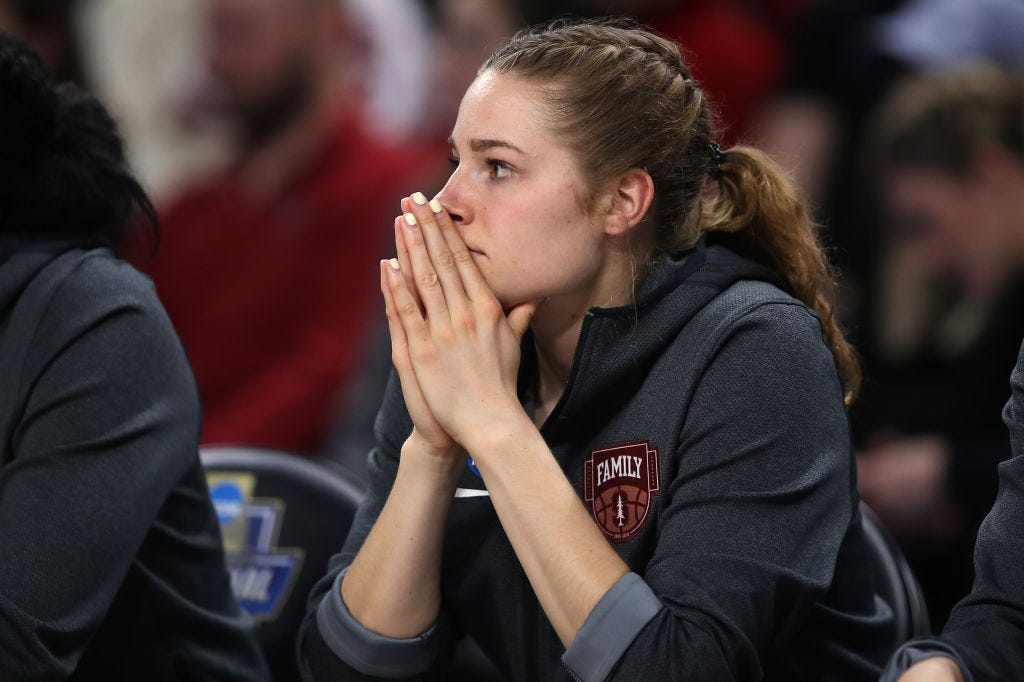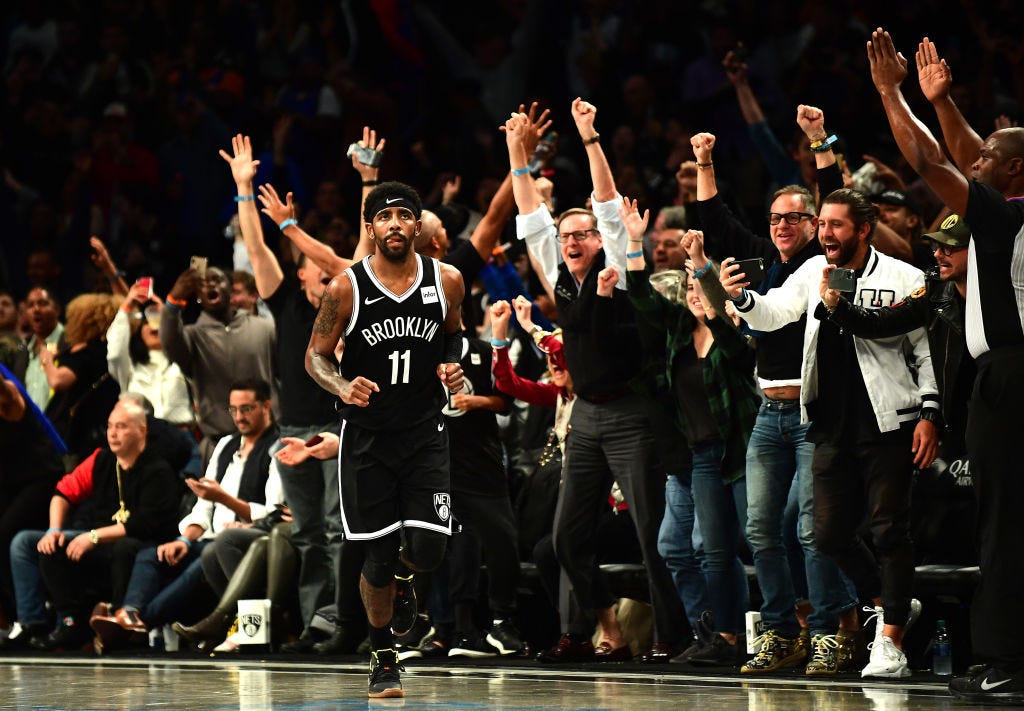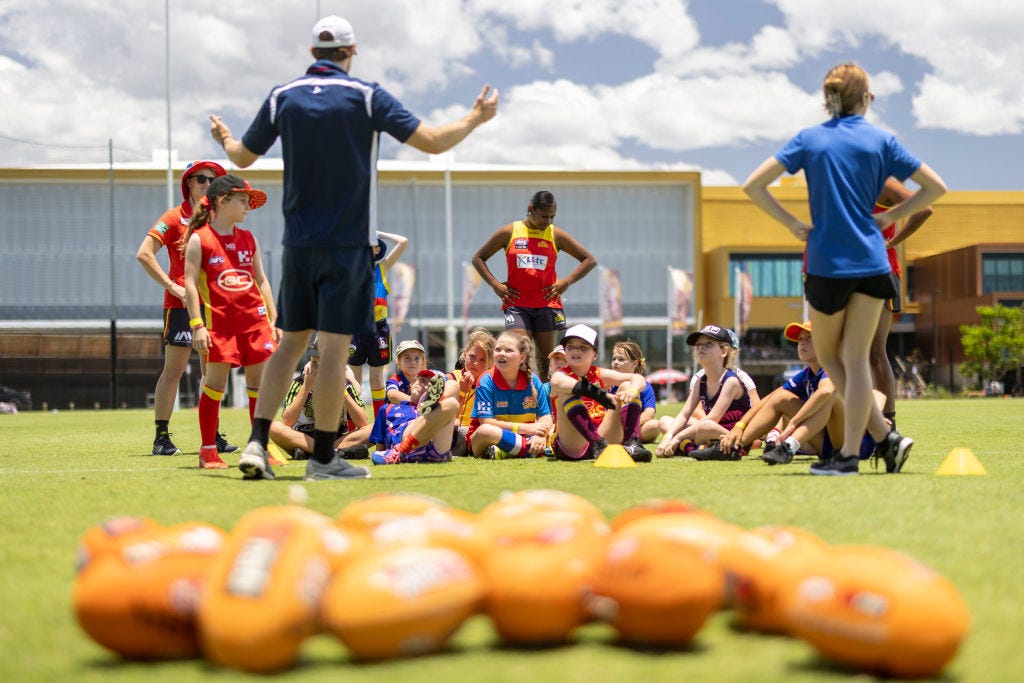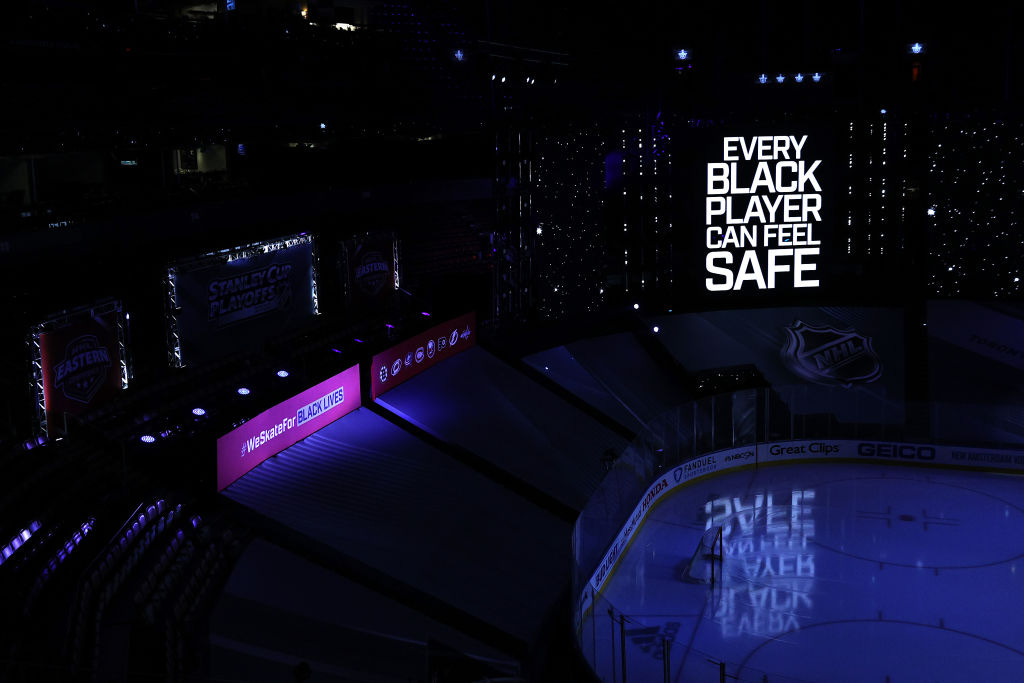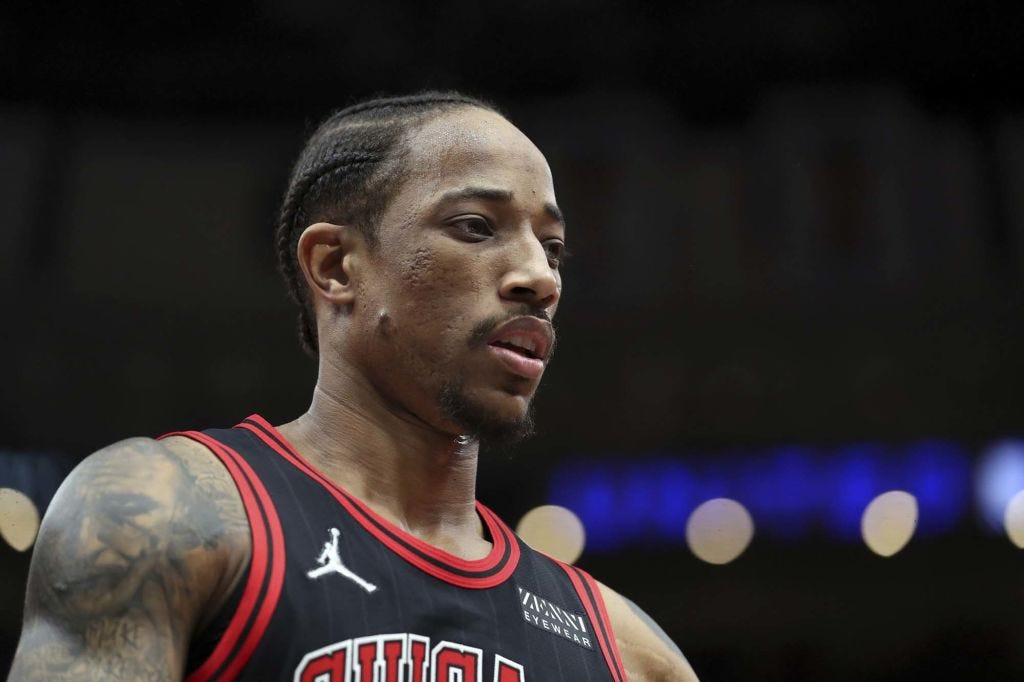Global Sport Matters: The Mental Health Issue (Part I)
What NCAA schools need to know, when heckling crosses the line, curbing racism in youth hockey, how youth coaches can help a COVID-spurred crisis, and why culture matters for athlete mental health.
Welcome to Hreal Sports, a newsletter written by Patrick Hruby about sports things that don’t stick to sports. Sign up and tell your friends!
Welcome back! I’m delighted to share first batch of stories for the May issue of Global Sport Matters, the digital publication of the Global Sport Institute at Arizona State University. For those of you who are unfamiliar with our work, we cover a wide range of outside the lines, sports and society topics though original research and reporting, and via podcasts, live events, standalone articles, and monthly themed issues.
Our latest issue is devoted to Mental Health. For a very long time, this topic was basically taboo within the hyper-competitive culture of sports. For athletes and others, acknowledging and admitting that you were, in fact, not okay mentally and emotionally was at best a sign of weakness—and at worst a threat to your livelihood. Organizations and fans alike were unsympathetic toward and unequipped to deal with the very real mental health challenges faced by many within sports, creating stigma, silence, and isolation that exacerbated those issues.
Fortunately, times are changing. Sports are beginning to reckon with mental health in a positive and constructive way, as athletes speak out and teams and leagues understand that they can and should do more to support them. Links and summaries are below for stories on what NCAA schools need to know about their athletes, when heckling crosses the line, curbing racism in youth hockey, how youth coaches can help a COVID-spurred crisis, and why culture matters for athlete mental health. Hope you enjoy—and stay tuned for Part II!
“What the NCAA and College Athletic Departments Need to Know About Athlete Mental Health,” by Mikaela Brewer.
Mental health is rigidly and fatally misunderstood, especially in college athletics. Brewer, a former Division I college basketball player who has personally dealt with mental health issues, explains what the NCAA and university athletic programs are missing about their athletes’ wellbeing—and what they can do to be more caring and responsive.
For the better part of my life, I’ve lived alongside depression and obsessive-compulsive disorder. They shadowed me throughout high school, and followed me out West to sunny California, becoming bolder and more palpable. I wasn’t formally diagnosed with both conditions until my freshman year at Stanford, home to one of the strongest women’s basketball programs in the country. I was the first Canadian to ever play for Cardinal, and fresh off of a silver medal with Team Canada at the FIBA Americas Championship.
Then in February 2017, I was hospitalized on a 5150 hold for suicide.
The hospital cleaved my spirit, as my teammates can attest to each time they visited. I had meager energy between lengthy, harsh therapy sessions and bouts of robust suicidal thoughts. In loneliness, I was left mindlessly scrolling through social media, articles, and message boards that only wore me down more.
I came across speculations about where I could have been when I wasn’t on the Stanford bench for a prolonged time. Many were negative: “She wasn’t good enough.” “She was kicked off of the team.” “She got into drugs and alcohol.” “She was pregnant.” Ironically, this ended up being productive scrolling — I recognized a problem that I could address.
I realized that my time away from the court didn’t prompt, “Gosh, I wonder if she’s struggling with her mental health?” from the fans, public, or news outlets. It generated judgment centered around the stereotype that college athletes are unbreakable. The skills and abilities of athletes are undeniably inspiring and motivating, but still, we’re not suited for Mount Olympus — we have the same brains and physiology as everyone else. We are just as human.
“When Does Heckling Cross the Line? How Athletes Cope with Heckling on the Field and Off,” by Alex Kirshner.
As long as sport has been played for fans, those fans have heckled, jeered and taunted the athletes performing for them. But in an era where mental health actually matters—and where 24/7 news and social media mean that negative feedback never ends—it may be time to re-evaluate where the line between tradition and toxicity lies.
When Pat Bostick played quarterback at the University of Pittsburgh in the 2000s, it was the heyday of the college sports’ message board era and the dawn of big social media platforms like Facebook and Twitter. At games, most of what Bostick heard from fans was “normal stuff,” he says. Sometimes, though, online gossip about him creeped into the stadium.
During fall camp in his freshman year in 2007, Bostick left the team. Online speculation around his departure was rampant.
“I was just a normal, overwhelmed 18-year-old kid who thought I was ready, but wasn't,” he says now. “And people knew about that. I think there were a lot of rumors as to why I left, and I think people did their reading on what those rumors might have been. A lot of that was on the message boards at the time.”
After he returned, when Pittsburgh was playing Rutgers, its Big East rival, Rutgers fans seated directly behind the Pitt sideline yelled out at Bostick, still a teenager: Why’d he leave? What was this opposing QB’s deal, after all?
“You heard it,” he says. “You can't deny that you hear it. I think you try to zone it out. I had enough to worry about playing, but when you know about girlfriends and your parents and you start hearing that kind of stuff, you definitely have to think about it. But, you have to have the mental strength to be able to block [it] out.”
It is a self-perpetuating cycle, because no team is the only one with fans who take it too far and get personal. Bostick, now a radio commentator and development official at the school, notes that his alma mater’s famous basketball cheering section, famously known as the Oakland Zoo, which also has a notable presence at Pitt football games, is “notorious for doing their research about opponents. I can't help but think that [for] any normal human being, some of it would stick in your craw a little bit. And there have been moments when you're frustrated or mad and you can't help but hear it.”
“COVID Has Spurred a Youth Mental Health Crisis. Here's How Coaches Can Help,” by Jon Solomon.
Youth sport coaches are often parents of the kids on the team, or they volunteer or are paid low wages to coach the team. That doesn't mean they can't become part of the support system that is vital for youth athletes — now more than ever.
After two years away from coaching, I could not believe how much the kids had changed. Two players quit early in the season. Many sniped at each other throughout games and practices. Some kids had very little confidence in themselves and had to be built up. Others had inflated egos and needed reality checks.
Granted, I was now for the first time coaching teenagers – an age that brings different social behaviors. But something else was happening. The kids simply didn’t know how to socialize after a year-plus of COVID-19 shutdowns. Nor could they handle whatever emotional struggles were brewing inside them. By the way they behaved, some of these kids were crying out for help.
I didn’t do a good enough job to help them. I felt totally unprepared to work with my players in a way that I had never before felt as a coach.
America’s youth are experiencing a collective mental health crisis, with more than four in 10 saying they feel persistently sad or hopeless, according to a new CDC study of high school students. And that’s just the headline. Other numbers in the same study are equally staggering:
More than one-third of high school students reported they experienced poor mental health. Sadness among White teens rose faster than among other groups.
More than one in four girls seriously considered attempting suicide during the pandemic – twice the rate of boys. Nearly half of LGBTQ teens said they contemplated suicide vs. 14 percent of their heterosexual peers.
More than half of all students reported emotional abuse by a parent or another adult in the home, including swearing at, insulting, or putting down the student.
And 11 percent experienced physical abuse in their home.
“We are just at the beginning of a secondary mental health pandemic,” said Rebekah Roulier, chief operating officer of Doc Wayne Youth Services, a sport-based group therapy program based in Boston. “The implications of social isolation and the stress upon us all will continue for years.”
“'Let’s Take This as an Opportunity’: How Youth Hockey Is Curbing Racism,” by Evan F. Moore.
Hockey is a very White sport, and non-White athletes experience racism from the pro level all the way down to youth leagues. Here's how coaches and leaders in hockey are trying to help the game move forward — and evolve how they respond to racist behavior from punishment to rehabilitation and reconciliation.
The sport’s ongoing issues with systemic racism are no secret. So when Black hockey parents like myself engage with White gatekeepers at the youth level, we usually want to know what they plan to do when (not if) our children are subjected to taunts and other forms of racism.
After an incident happens, after suspensions have been handed out, after any outrage has died down, what should players, parents, teams, and administrators do next? And can the sport do something more demonstrative than trotting out hashtag campaigns and mantra like the National Hockey League’s “racism has no place in this sport?”
Duante' Abercrombie believes that it can. A Washington, D.C. native and youth hockey administrator, he brought an idea to life that goes beyond condemnation and punishment: He attempted to rehabilitate a White player within his organization who directed a racial slur at a Black opponent.
Abercrombie, the director of player achievement for the Washington Little Caps, an Atlantic Youth Hockey League team for players 16 and younger, won’t say exactly what slur was used – but compared it to a similar to an incident involving former Arizona Coyotes prospect Jalen Smereck, who was taunted by an opposing player in the Ukrainian Hockey League with a gesture mimicking peeling a banana and eating it.
Abercrombie also said that the Little Caps player in question received separate suspensions from USA Hockey and his team, which features multiple players of Color.
“As there have been incidents all over the country, our hockey directors are very forward-thinking and said, ‘Let's get ahead of this,’’ Abercrombie explained. “‘Let's take this as an opportunity to be able to teach while these individuals are suspended.’
“What's Missing in How We Talk About Athlete Mental Health?” by Brendon Kleen.
The sports industry has heightened its attention on the mental wellbeing of athletes, and most professional teams now employ mental health professionals. But new Global Sport Institute research shows there are gaps in how athlete mental health is being studied and treated — with profound consequences.
Where there is immense energy funneled toward talking about mental health and even hiring staff to manage mental health in sports organizations, the lived experiences of athletes are still often left out of treatment plans and org charts. According to new research from Alisia Tran, PhD, a Global Sport Scholar at Arizona State University’s Global Sport Institute, the specifics of athletes’ lives and their upbringings are largely ignored in the sports industry, even as numerous mission statements and best practice documents flutter across the business each year.
Since 2016, just 8.3 percent of published mental health studies have included references to race, ethnicity, or culture, according to a literature review conducted by Tran.
“An athlete doesn’t operate in isolation,” says Tran. “We’re really missing out on a lot of the whole person when we’re not considering things like culture as well as an athlete’s mental health generally.
“When I think about how it could be that we’re missing out on a portrait of a whole person by being acultural, I think we’re reinforcing this really narrow, performance-focused view of athletes that really doesn’t speak true to the power of sport and the power of athletes to affect others through sport.”
Across all sports, athletes who have discussed their diagnoses or psychological challenges often express how personal their journey has been. In response to DeRozan’s comments, NBA champion Bruce Bowen told ESPN that "(Black men) are brought up to believe if you talk to people about those things, that's a sign of weakness. … the other problem we have is this deep-seated mistrust of the actual people who can help you.”
Tennis legend Serena Williams and Olympic shot put medalist Raven Saunders have acknowledged that being Black women contributed to the mental health challenges they faced. 2020 U.S. Open champion Naomi Osaka was the victim of severe heckling at the Indian Wells Masters tournament this year and referenced the racist jeers Williams suffered at the same tournament more than two decades prior.
And that’s just a handful of Black athletes. White men, like the NBA’s Kevin Love or college football player Harry Miller, have been among the more vocal faces of depression among athletes as well. Latina Olympic gymnast Laurie Hernandez recently challenged the Hispanic community to be more hospitable for those dealing with psychological demons. Asian-American NBA phenom Jeremy Lin consistently draws connections between the racism he faced playing basketball and his depression.
“If people are supposed to be a team and they’re supposed to be together, I think sometimes we think that if we are colorblind and gloss over our cultural differences, then we’ll be more united. The melting pot idea,” says Tran. “But you’re asking people to suppress and not share an important part of their identity and who they are and where they’re coming from. You’re actually keeping those divisions there. That’s something that isn’t actually helpful for teams, coaches, and whole sports.”
This has been Hreal Sports, a newsletter written by Patrick Hruby about sports things that don’t stick to sports. If you have any questions or feedback, contact me at my website, www.patrickhruby.net. And if you enjoyed this, please sign up and share with your friends.





